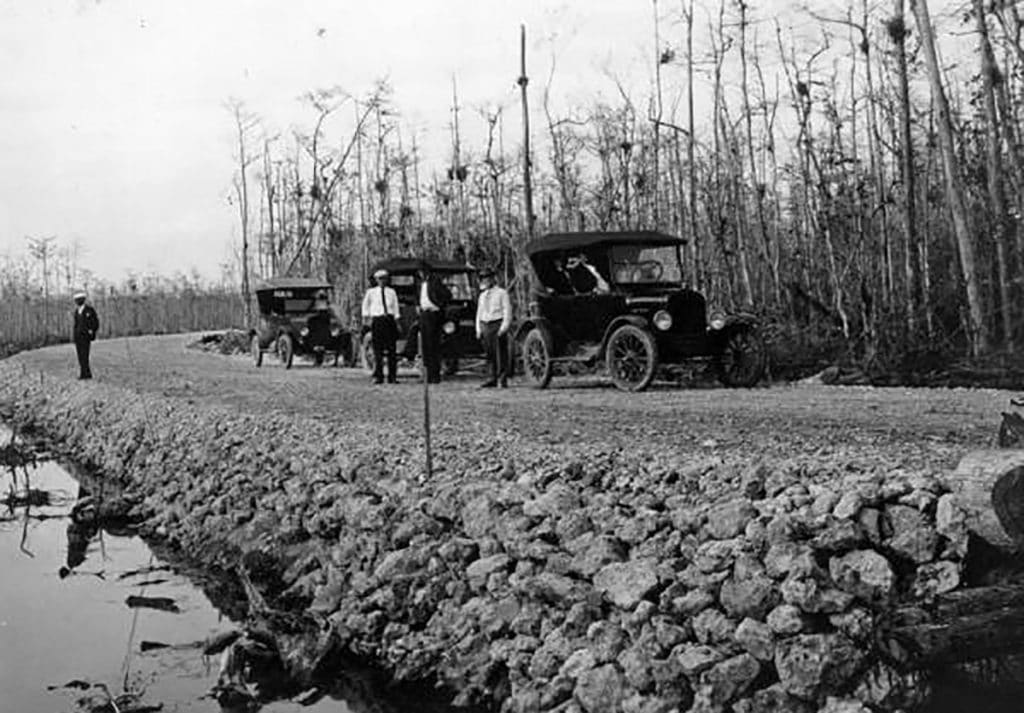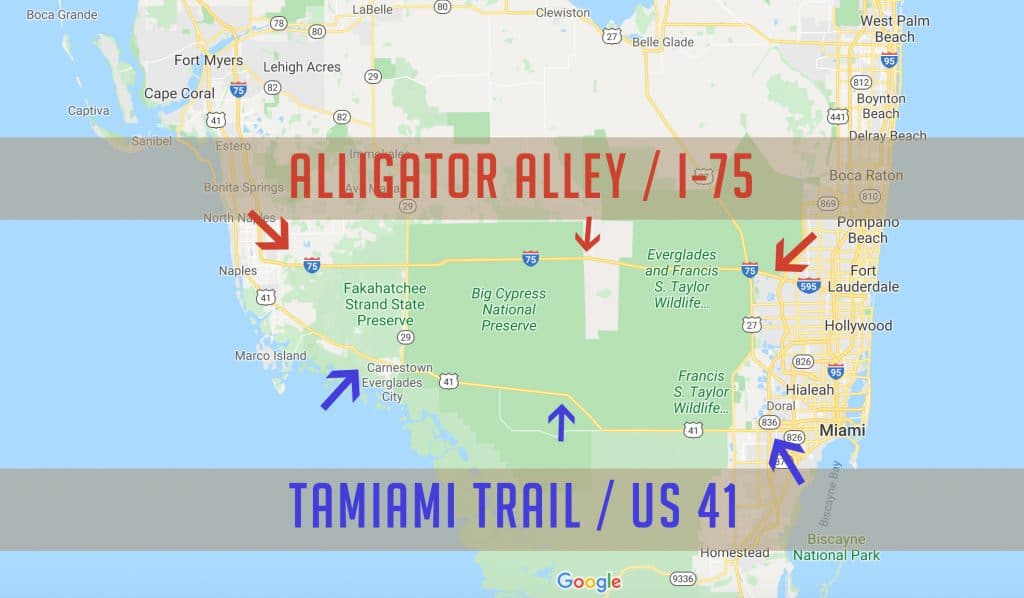We’ve all probably driven across Alligator Alley, the 70mph highway leading from Naples to Miami. But have you ever taken the “scenic” route across the Tamiami Trail?
The two-lane Tamiami Trail was the original Alligator Alley. It opened April 25, 1928, spaning 264 miles from Miami to Tampa. The project took 13 years to construct, with numerous hiccups in funding along the way. Different sources say the Tamiami Trail project cost $8M-$13M in total and used more than 2.6M sticks of dynamite in the process.

Dynamite Was Used on the Tamiami Trail?!
Yes, explosives were used to create the east-west canal through the everglades, and the dirt fill was used to construct the roadway. You can imagine what commotion this must have caused the otherwise untouched everglades of the time. I’m sure that walking chest deep in swamp water with dynamite on your shoulder made for a rather interesting story as well.
Where The Name Tamiami Trail Came From
The name Tamiami, as you might guess, is a combination of the road’s destinations, Tampa to Miami. Other name options included the Miami to Marco Highway or the Atlantic to Gulf Boulevard, but the public ultimately took to the cleaver Tamiami Trail, which is also designed as US Highway 41.

Tamiami Trail Was a Trail Blazer
As you can imagine, having a roadway from popular east coast towns like Miami opened Southwest Florida to a new world of travel, business, and tourism. Barron G. Collier, Captain J. F. Jaudon, and Governor John W. Martin were a few of the trail blazers that planned, funded and approved the road construction that changed south Florida forever.
Tamiami Trail vs Alligator Alley
In February 1968, Alligator Alley (known as Everglades Parkway) opened after just four years of construction. The simple two-lane toll road suffered from poor construction and poor environmental planning. Numerous automobile accidents occurred with both wildlife and cars alike. Between 1982-1992 the four-lane highway that we know as Alligator Alley today was rebuilt with safer road construction and fencing for wildlife, along with bridges to let water and wildlife flow under the roadway.
The completion of the project was the final piece to linking Interstate 75 from Miami all the way through Michigan to the Canadian border. Impressive!

Implications of the Tamiami Trail and Alligator Alley
Without these roads, it’s safe to say that Southwest Florida wouldn’t have the same development history of business, tourism and real estate. However, we now also realize the lack of concern for the natural environment, especially regarding the flow of the Florida Everglades.
In fact, the roads have served as a dam, impeding the downward flow of the Everglades “River of Grass”. We have seen first-hand how that reduction of water flow has resulted in extreme environmental problems in the Caloosahatchee River, which dumps out right here near the Sanibel Lighthouse.

Next Steps – How You Can Help
Luckily there have been major calls for action to help fix this environmental issue. You can visit sites like captainsforcleanwater.org to learn more about the problem and currently proposed solutions.
We hope you enjoyed a quick history lesson on the Tamiami Trail and Alligator Alley. To read more about the history and current “next steps” for the roadway, visit the National Park Service article linked here.
VisitFlorida offers a guide to cruising the historic Tamiami Trail from Miami to Naples, and the many fun stops along the way. Click here to read the article on VisitFlorida.com.
